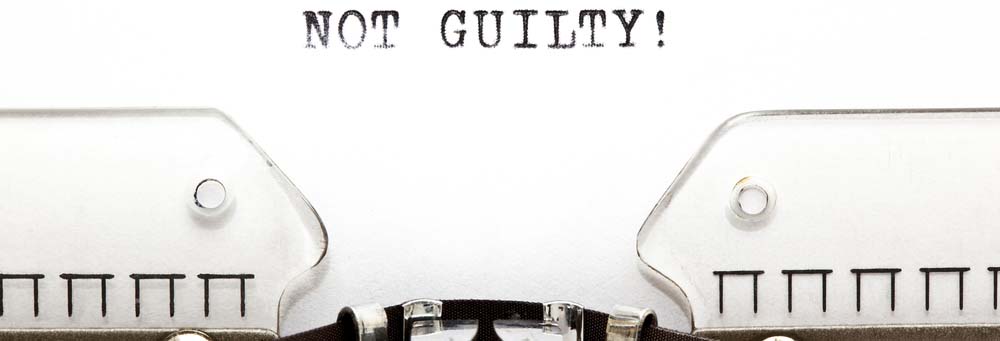Contact Us
KOGARAH OFFICE
Suite 309 – 310, Level 3
13A Montgomery Street
KOGARAH NSW 2217
SYDNEY CITY OFFICE
Ground Floor
54 Martin Place
SYDNEY NSW 2000
Email: solicitors@gmhlegal.com
Phone: (02) 9587 0458
Facsimile: (02) 9587 2936
FORENSIC PROCEDURES
Everyone at a crime scene leaves some material such as a hair, body fluid, fibre from clothing and other signs. Taking DNA samples or fingerprints from a victim or a suspect can greatly assist the Police with their investigation.
Examples of common forensic procedures are:
- taking a sample of your DNA;
- taking your fingerprint(s);
- making a dental impression; or
- conducting a medical examination
GMH Legal’s solicitors are often required to appear for our clients who are before the Local or Children’s Court for an application for an order for forensic procedure. This is an order that is sought by a specified police officer (“the authorised applicant”), authorising the taking of a forensic sample from a person who is referred to as the “suspect”.
This chapter of our website also deals with scenarios when prosecution seeks to lead evidence of the comparison of DNA material found at a crime scene, or other relevant place, with DNA taken from a suspect with their consent by a police officer pursuant to Part 3 of the Crimes (Forensic Procedures) Act 2002 (NSW) (‘the Act’).
The admissibility of DNA given to police by consent can still be contested as the legislative scheme in relation to forensic procedures undertaken with consent by police officers is almost as complex and mandatory in its terms as that governing the making of coercive orders by senior police officers or Magistrates.
Importantly, the ‘consent’ given under Part 3 should not be confused with the consent known to the law in general. The consent given under Part 3 is rather a creature of statute, deemed to exist only when a range of statutory pre-conditions and tests are met. In circumstances where the legislative requirements are not met, either the consent never existed in the first place, or the police action in seeking or acting on the consent was without power.
WHAT ARE FORENSIC PROCEDURES?
The Crimes (Forensic Procedures) Act 2002 (NSW) gives wide powers to Police and other enforcement officers to take photographs, body samples (including DNA samples, dental impressions and casts from convicted criminals and people suspected of committing a criminal offence.
A forensic procedure does not include any intrusion into a person’s cavities (except the mouth) or the taking of a sample for the sole purpose of establishing the identity of the person from whom the sample is taken.
These procedures can only be carried out by qualified doctors and dentists.
Who is authorised to make an application for an order for forensic procedure?
An authorised application is defined as:
- The police officer in charge if a police station
- A custody manager
- An investigating police officer in relation to an offence
- Any police officer involved in the investigation
- The Director of Public Prosecution (DPP)
A suspect can be request to undergo a forensic procedure where there are reasonable grounds to believe that the result of the procedure will tend to confirm or disprove the suspect’s involvement in an indictable offence.
How can a sample be obtained from you?
A sample can be obtained:
- With the consent of the suspect, or
- With the authorisation of a senior police officer, or
- Pursuant to an order from a Court.
The suspect must be informed of the purpose for which the procedure is required, the offence in relation to which it is required, the manner in which it will be conducted, that the suspect may refuse consent and the consequences of failing to consent.
A police officer must not ask a suspect to undergo a forensic procedure unless satisfied that there are reasonable grounds upon which to believe that the procedure might produce evidence tending to confirm or disprove that the suspect committed either the offence in respect to which they are a suspect.
If you have a cognitive disability or mental illness, the police officer must get an independent third person with you when asking for or taking forensic evidence.
What if I do not consent to undergoing a forensic procedure?
If a suspect cannot or does not consent to the taking of a forensic sample, an order may be made by:
- A senior police officer (for non-intimate forensic procedures only), or
- An authorised justice (for an interim order), or
- A Magistrate (for a final order).
What happens after the forensic procedures?
If, after taking a forensic procedure from a suspect, there is sufficient material to be analysed in the investigation of the offence, the investigating police officer must ensure:
- That a part of the material sufficient for analysis is given to the suspect,
- That reasonable care is taken to protect and preserve the sample until it is given to the suspect,
- To reasonably assist the suspect to protect and preserve it until it is analysed.
The result of the analysis of any forensic sample must be made available to the suspect unless to do so would prejudice the investigation of any offence. However the results must be made available to the suspect in reasonable time before the evidence is adduced in an y prosecution of the offence.
TYPES OF FORENSIC PROCEDURES
There are three types of forensic procedures:
- An intimate forensic procedure
- A non-intimate forensic procedure
- A buccal swab (saliva taken from a person’s mouth)
A non-intimate forensic procedure means any of the following:
- An external examination of a person’s body other than the private parts, that requires touching of the body or removal of clothing
- The carrying out of a self-administered buccal swab
- The taking of a sample of hair, other than pubic hair
- The taking of a sample of nails or of matter from under the nails
- The taking of a sample of any matter from the external part of the body
- The taking of handprint, fingerprint, footprint or toe print
- The taking of a photograph of a person’s body, other than the private parts
- The taking of an impression or cast of a wound from a part of the person’s body
- The taking of the measurements of a body or any part of the body, other than private parts.
An intimate forensic procedure means any of the following:
- An external examination of a person’s private parts
- The carrying out go a buccal swab
- The taking of a sample of blood
- The taking of a sample of pubic hair
- The taking of a sample of any external matter from a person’s private parts
- The taking of a dental impression
- The taking of a photograph of a person’s private parts
- The taking from an impression or cast of a wound from the person’s private parts.
The police must usually destroy forensic samples after 12 months if:
- They have not charged you with an offence at that time
- A court has found you not guilty of the offence.
For more information, please refer to the Legal Aid’s ‘Fingerprints and body samples’ section.
FORENSIC PROCEDURES INVOLVING CHILDREN
Procedures cannot be undertaken on children under the age of 10, while a child from the age of 10 to 18 cannot consent to forensic procedure.
Intimate and non-intimate procedures can be undertaken on a young person aged between 10 and 18 only by consent of the child, by consent of his/her parents or guardian or by order of the Magistrate.
A Magistrate can order that a young person voluntarily submit to a forensic procedure if:
- The consent of a parent or guardian cannot be obtained, or
- The young person withdraws a consent previously given, or
- The young person is a suspect and the procedure may produce evidence tending to confirm or disprove his/her involvement.
In considering whether to make an order, the Magistrate must take into account the best interests of the young person and his/her expressed wishes.
The young person must have an ‘interview friend’ present on the hearing of the application and may have a lawyer present. The ‘interview friend’ may be a parent, guardian or other person chose by, or acceptable by the young person and his legal representative.
For more information, please refer to the NSW Commission for Children and Young People.
FORENSIC PROCEDURES FOR VICTIMS
Am I obliged to give forensic evidence?
As a victim, you have the choice to decide whether you want to give forensic evidence. You can change your mind at any time prior to or whilst the sample is being taken by simply indicating to the person taking your sample that you no longer wish to do so.
If you are under 16 or you have some difficulty understanding what occurs when a forensic procedure is conducted due to physical or mental disability, consent can be provided either by a next of kin or by your guardian.
How will the forensic procedure be performed?
A sample will be taken in a way that lessens any harm or embarrassment to you and avoid offending you cultural or religious beliefs. The number of people present when a sample is taken will be kept to a minimum.
You can have a doctor of your choice present if a blood sample is to be taken or a sample is to be taken from inside your mouth. The doctor can be your witness to the procedure but is not allowed to take part in it.
For more information, please refer to the Commissioner for Victims’ Rights website.
FINGERPRINTS
In most situations, you have to let the police take your fingerprints if they believe you have committed an offence. However the police cannot taken your fingerprints for minor offences such as jaywalking or littering.
If the police are allowed to take your fingerprints, they can use reasonable force if you refuse to give it to them.
The police must usually destroy your fingerprints after 6 months if:
- They have not charged you with an offence at that time
- A court has found you not guilty of the offence.
For more information, please refer to the Legal Aid’s ‘Fingerprints and body samples’ section.
DNA SAMPLES
DNA samples are considered as intimate body samples. Since they are taken from private or sensitive parts of the body. Just like fingerprints, there are different rules for taking DNA samples depending on your age. Please see the section on ‘Forensic procedures involving children’ for information regarding minors.
For all body sample you can always say no. However the police may get a Court order to get an intimate body sample if you refuse.
Any DNA sample will be destroyed if a period of 12 months has elapsed since the taking of the sample and proceedings against the suspect have not been instituted or have been discontinued. In addition, any DNA sample will be destroyed if the conviction is quashed, or the forensic material is deemed to be inadmissible.
For more information, please refer to the Legal Aid’s ‘Fingerprints and body samples’ section.
Call the experienced team at GMH Legal to assist you in your matter.
A free consultation with GMH Legal is an opportunity to gain deep insights into your legal situation and all of your options.
Why Choose GMH Legal?
- Over 60 years of combined legal experience
- Outstanding track record with a winning approach
- First appointment is always free
- Meet our team now.






